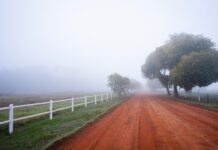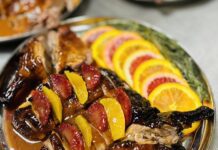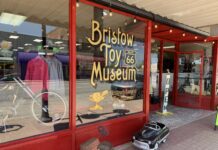Oklahoma is known for its horse sense.
That idiom goes well beyond residents’ straight talk and practicality and extends to the impact that the horse industry has on its culture and economy.
“We have some of the best breeders – and I’m talkin’ all breeds – in the world,” says Darrell Bilke, executive director and CEO of the Pinto Horse Association of America, based in Bethany. “Many Oklahomans have been raised with horses, from the small farms in the eastern part of the state to the big ranches out west.”
With Purcell as the Quarter Horse Capital of the World, Oklahoma ranks highly in three key categories for “horsiness.”
The state is No. 5 in horses (252,700), says Cliff Williamson, director of health and regulatory affairs with the American Horse Council. Only Texas, California, Florida and Ohio – all much larger in population than the Sooner State – have more horses.
In terms of frequency, only Wyoming, South Dakota, Montana, Idaho and North Dakota – all much smaller in population – have lower human-to-horse ratios than Oklahoma (10.8 to 1).
Williamson says Oklahoma also ranks fifth nationally, at $2.3 billion, in owner expenditures and racing revenues, and that doesn’t include the hundreds of millions of dollars generated by the horse industry in the state.
For instance, the pinto association’s world Color Breed Congress, Nov. 2-10 at Tulsa’s Expo Square, brings $15 million of commerce into the county, Bilke says. The American Quarter Horse Association’s world championships, Nov. 1-17 at State Fair Park, adds $30 million to Oklahoma City’s economy, says Sarah Davisson, the group’s director of communications.
Purcell, also called the Heart of Oklahoma because it’s the geographic center of the state, has had ties to the quarter horse since the 1950s, when the first of many breeding farms began. Larry Abney, a trainer for nearly 40 years, says notable facilities have included those operated by Jerry Wells, Clarence Scarborough Jr., A.B. Green, Frank Merrill and Joe Gary.
Jack Roth, a longtime equine veterinarian in Purcell and owner of the Oklahoma Horseshoeing School, says the town has the right combination of elements for horses.
“In the winter, it is almost never too cold to do physical work outdoors – same for summer,” he says. “Horses like grass; we have grass. Horses like space; we have space. [It’s] hard to have a horse farm in a densely populated area; Oklahoma is sparsely populated. We raise cattle in Oklahoma – [we] need horses to work cattle.
“It just fits. Purcell is where the horse and horseman come together.”
Bilke applies the same equation to the state.
“Oklahoma is the cowboy state in the nation,” he says. “True cowboys come from Oklahoma.”
Almost everyone close to horses has a spiritual bond with the half-ton beasts.
“When you have horses in your life, you’re passionate about it,” Davisson says.
Working with a horse “is a different kind of experience that you can have no other way,” Roth says. “All of us … feel it.”
And with many chuckles, Bilke adds: “From the day I was born, I’ve had a horse. They’ll either bite you, crap on you, run over you, or all three. But I wouldn’t have it any other way.”
Real Horse Tales from Those in the Industry
Two recessions this millennium and changes in tax laws that restrict deductions for equine owners have reduced the number of horses across the country.
Oklahoma, for example, has about 74,000 fewer horses than the 326,134 in the state in 2002, according to the American Horse Council.
Regardless, our state is No. 5 nationally in horse population. Men and women in the industry remain dedicated to showing, racing, working, treating, grooming and shoeing these beautiful beasts.
Following are vignettes of the relationships people have with the animals that contribute billions of dollars to the Oklahoma economy each year.
Jack Roth, Purcell
Longtime veterinarian
Owner of the Oklahoma Horseshoeing School
Roth has a keen sense of humor, one found in many who are around horses every day. He says he became a veterinarian in Oklahoma “for the same reason that John Dillinger robbed banks – that is where they keep the money.”
Oklahoma is horse country. Thousands of jobs and millions of dollars in income derive from animals that need specialized services. Roth found his niche decades ago.
“I’ve been a horseman starting from [age] 11,” he says. “I have done some veterinary practice on other species … but there was never any doubt that I would be a horse vet. I see things in their behavior that few can see. I know how to talk to them, know their language.”
Roth’s knowledge has come through years of practice, but also seizing key moments to learn something new.
“Whenever I had the opportunity to learn from a master for a few weeks, I just dropped everything and went,” he says.
Like any owner, Roth respects the high intelligence that most horses possess. He cites one horse – a “huge black Thoroughbred stallion [that] bred the mares, killed the coyotes, protected the herd” – that despised outsiders.
“My daughter came out … every morning and the stallion would sidle up to the fence and she would get on and he would take her [the quarter-mile] to the bus stop,” he says. “Same thing after school. The horse met her at the bus stop and took her to the house. Fail safe. But let a stranger go into his pasture and he would be taking his life in his hands.”
Roth raced another horse, a black Thoroughbred gelding named Dream Light, at Remington Park in Oklahoma City. He was riding Dream Light through an 80-acre pasture and “gave him a breeze” but the horse, at a full gallop, “was too strong and I couldn’t stop him,” he says.
Roth flew out of the saddle when Dream Light jumped a 6-foot, barbed-wire fence. The horse ran another 40 yards before stopping and seeing his owner injured in a ditch.
“He came back and put his head under my armpit, lifted me up like that and slowly took me back to the house a half-mile away,” Roth says. “I’ve never seen nor heard of anything like that before or since in my life.”
Sarah Davisson
Director of communications, American Quarter Horse Association
Davisson, a West Virginia native, grew up around Quarter horses and showed her favorite, Goose, from when she was 10 until 23. For her, being around horses has opened career opportunities that she never anticipated.
“Being around horses in general requires responsibility,” Davisson says. “So it instills discipline. When you have horses in your life, you’re passionate about it. And taking initiative evolves in leadership.”
As part of her job with the Quarter horse association, she stresses the importance of these traits to young people and encourages them to stress these qualities in any applications for college, scholarships or employment.
“I definitely love talking to youth about their career options, from competing on equestrian teams in college to leadership programs,” Davisson says.
Darrell Bilke
CEO and executive vice president, Pinto Horse Association of America
The lifelong Oklahoman was on the rodeo teams at Miami High School, Northeastern Oklahoma A&M and Panhandle State University.
“From the day I was born, I’ve had a horse,” says Bilke, adding that Oklahoma is ideal for the entire industry. “Our race horse industry is great with Remington Park, Cherokee Casinos, Will Rogers Downs and Fair Meadows. The Tulsa fairgrounds is a premier show facility, especially in the summer because of air conditioning and ventilation.”
The association’s Color Breed Congress, Nov. 2-10 at Expo Square, is one of many shows throughout the state. It features Pintos, Palominos, Buckskins, Appaloosas, mules and donkeys.
“In the horse world, there’s a lot of trainers who have different breeds in their barns,” Bilke says. “So as a group, they can bring all of them to the Color Breed Congress. Twenty-five years ago, people specialized in one breed, but the economy has changed; the tax laws have changed to not allow training horses as a business write-off.
“Still, Oklahoma is blessed for all the horse shows it has. All the major breeds have world shows in the state. Not every state can say that.”



























